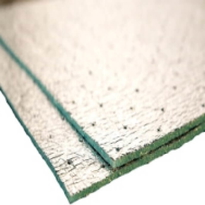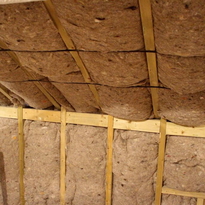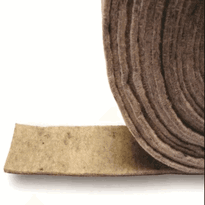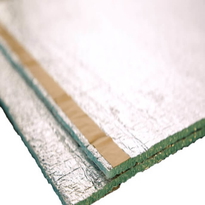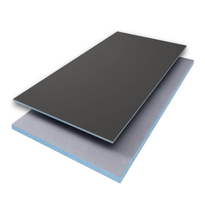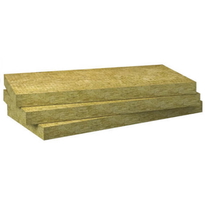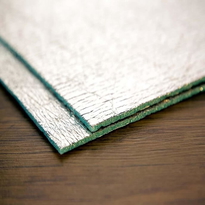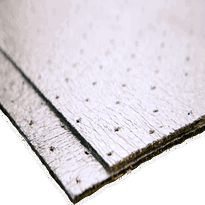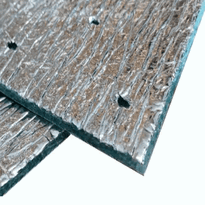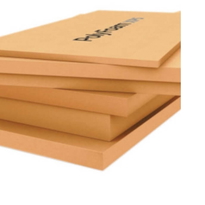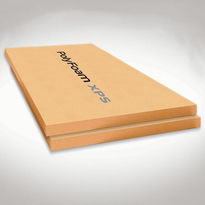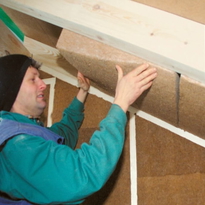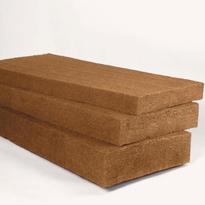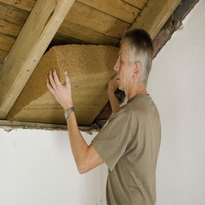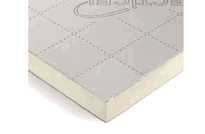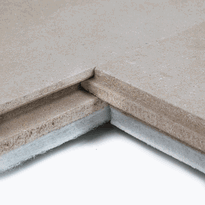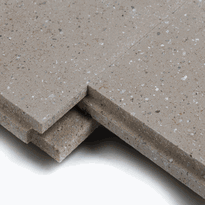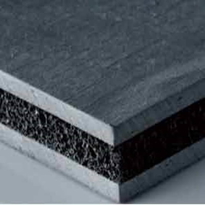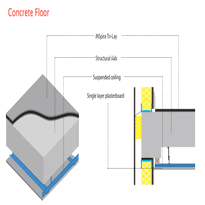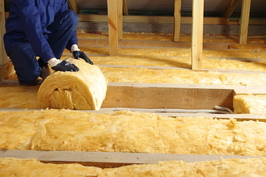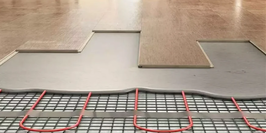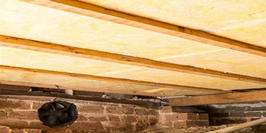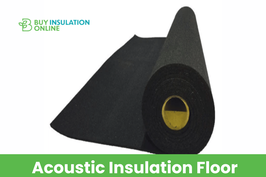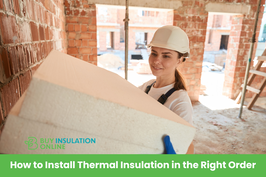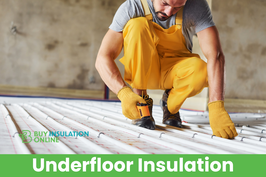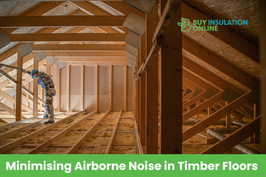Floor Joist Insulation
Floor joist insulation involves installing materials such as fibreglass batts, mineral wool, or foam boards between the joists to create an effective thermal barrier, reduce heat loss, and enhance energy efficiency. Proper installation is crucial and includes sealing gaps to prevent drafts, adding vapour barriers where necessary, and inspecting for signs of moisture or damage to ensure maximum effectiveness.
When choosing suitable materials, it’s important to consider their thermal and moisture properties to select the most effective option for the specific environment. Adequate installation and maintenance contribute to improved insulation performance and long-term durability.
Continuing will provide a detailed understanding of best practices, appropriate materials, and maintenance strategies to ensure excellent insulation results for your property.
Benefits of Insulating Your Floor Joists
Insulating floor joists offers several essential benefits that enhance the overall performance and efficiency of a building. It creates a thermal barrier that significantly reduces heat transfer, helping to maintain a consistent indoor temperature. Proper installation is key to maximizing insulation effectiveness. Gaps within the floor joists can lead to considerable energy loss, but insulation effectively minimises this, reducing the load on heating and cooling systems. Consequently, homes consume less energy, which can result in lower utility bills and greater cost savings over time. Furthermore, insulation improves comfort by preventing drafts and cold spots near external walls, creating a more stable and pleasant indoor environment. Proper insulation also plays a crucial role in moisture control, reducing the risk of mould growth and structural damage, which ultimately extends the long-term durability of the property.
Popular Materials for Floor Joist Insulation
The choice of insulation material for floor joists relies heavily on their unique properties and suitability for different applications. Here are some of the most commonly used materials in the UK and how their characteristics influence their application. Fibreglass batts are widely utilised due to their ease of installation, affordability, and balanced thermal performance. They typically provide a thermal conductivity (K-value) of around 0.035 to 0.040 W/m·K, offering effective insulation when installed correctly. Their flexibility makes them suitable for irregular spaces, and they're a cost-effective solution for many residential projects. Mineral wool insulation is known for its durability and moisture resistance. Its non-combustible nature and ability to perform well in damp environments make it ideal for use in areas where moisture management is a concern. Mineral wool also offers good thermal transmittance values, helping to improve overall thermal efficiency. Foam board insulation provides high thermal resistance per centimetre of thickness, making it a versatile option for insulating floor joists in limited spaces. Its steady thermal properties and ease of handling allow for precise application, thus enhancing the overall insulation performance. Additionally, foam board insulation is resistant to pests and mold growth, which contributes to the longevity of the insulation system. The selection of an insulation material depends on its thermal and moisture properties, as well as the specific requirements of the building. Proper installation is crucial to maximise effectiveness and ensure long-term performance of the insulation system in UK building conditions.
Factors to Consider Before Installation
Before commencing the installation of floor joist insulation, it's vital to undertake comprehensive pre-installation preparations to ensure the process is effective and compliant with safety standards.
First and foremost, evaluate the space to verify there's adequate clearance for both insulation and personnel, thereby minimising the risk of damage or injury.
The installation of a vapour barrier is essential to control moisture migration, which could otherwise compromise the performance of the insulation.
Seal all existing holes or gaps to prevent the entry of pests and rodents into the area. Moreover, assess the location’s electrical wiring and plumbing systems to ensure that the insulation doesn't interfere with these vital components.
[Make sure to verify that all existing wiring and pipes are properly supported and secured, which helps prevent damage during installation and maintains building safety standards.
Finally, prioritise health and safety by donning appropriate personal protective equipment during installation.
These preliminary steps will facilitate a successful, durable, and safe insulation process, contributing to long-term energy efficiency and preserving the structural integrity of the building.
Environmental and Health Advantages of Insulation
Environmental and health benefits are important factors when selecting floor joist insulation, as these advantages influence both the sustainability of the building and the health of its occupants.
Proper insulation minimises heat transfer, which reduces energy consumption for heating and cooling. This leads to lower greenhouse gas emissions and a smaller carbon footprint for the home. Eliminates Drafts Properly installed insulation also helps reduce indoor air pollution by sealing gaps and preventing the entry of dust and allergens from outside.
Effective insulation also helps control moisture and condensation, preventing the growth of mould and mildew that can cause respiratory problems and allergies.
Using eco-friendly materials such as recycled paper or natural fibres further reduces environmental harm during production and disposal.
In addition, insulation helps prevent pipe freezing, which protects against water damage and structural deterioration. This not only preserves the integrity of the building but also reduces the need for material repairs and waste.
Maintaining and Improving Your Insulation Investment
Regular inspection of floor joist insulation is essential to preserve its effectiveness and prevent unnecessary energy loss. Over time, gaps, damage, or settling can compromise insulation performance. It's recommended to check periodically for visible gaps, compressed areas, or signs of moisture intrusion. Proper maintenance ensures your investment performs optimally and extends its lifespan. Sealing cracks and holes with expanding foam prevents draughts and air leakage, thereby maintaining insulation efficiency. Installing vapour barriers helps protect against moisture, which can lead to mould growth and degrade insulation materials. Upgrading outdated insulation with newer, higher thermal resistance options such as rigid foam boards can significantly improve thermal performance. Furthermore, removing debris and dust from beneath the floor ensures the insulation maintains proper contact and functionality. Consistent maintenance and timely upgrades are key to preserving insulation performance. These measures contribute to energy savings and create a more comfortable indoor environment, supporting a well-insulated and energy-efficient home.
Conclusion
Proper insulation of floor joists enhances energy efficiency, lowers heating and cooling costs, and reduces environmental impact by minimising energy consumption. Selecting suitable materials, considering installation factors, and maintaining insulation over time are vital for long-term performance. By understanding these elements and following recommended procedures, homeowners and professionals can ensure effective insulation that improves comfort, maintains structural integrity, and promotes sustainable practices. Accurate installation and regular maintenance are essential to maximise the benefits of floor joist insulation.


